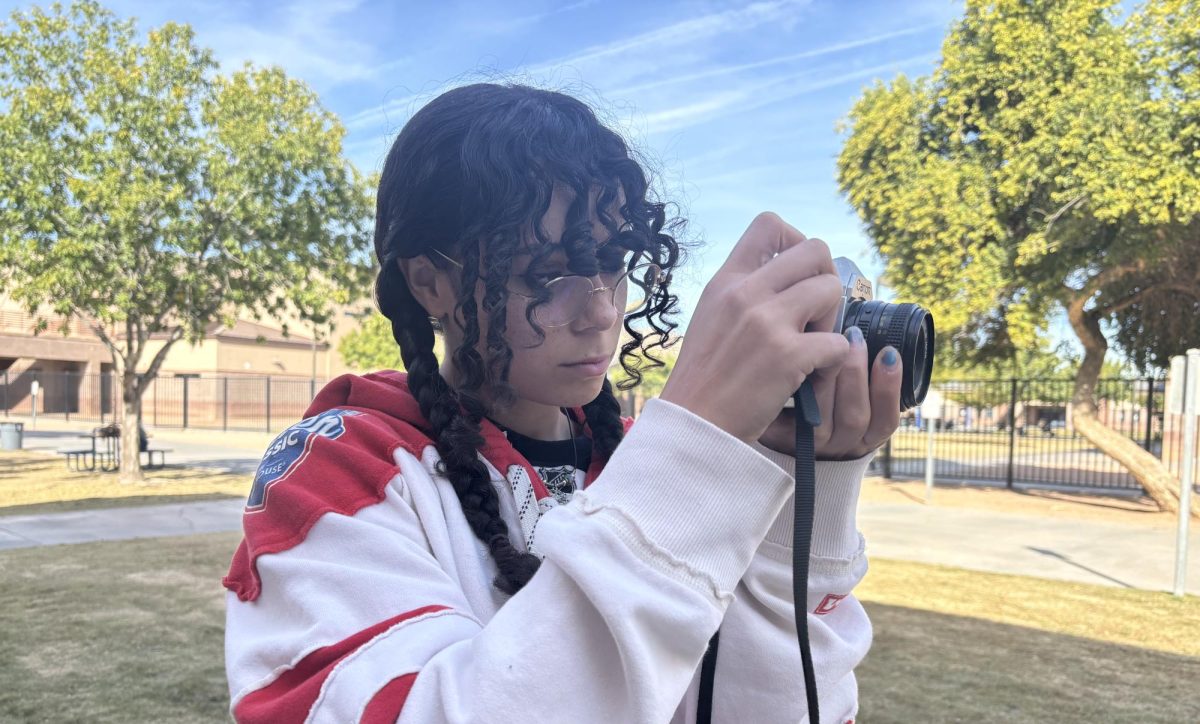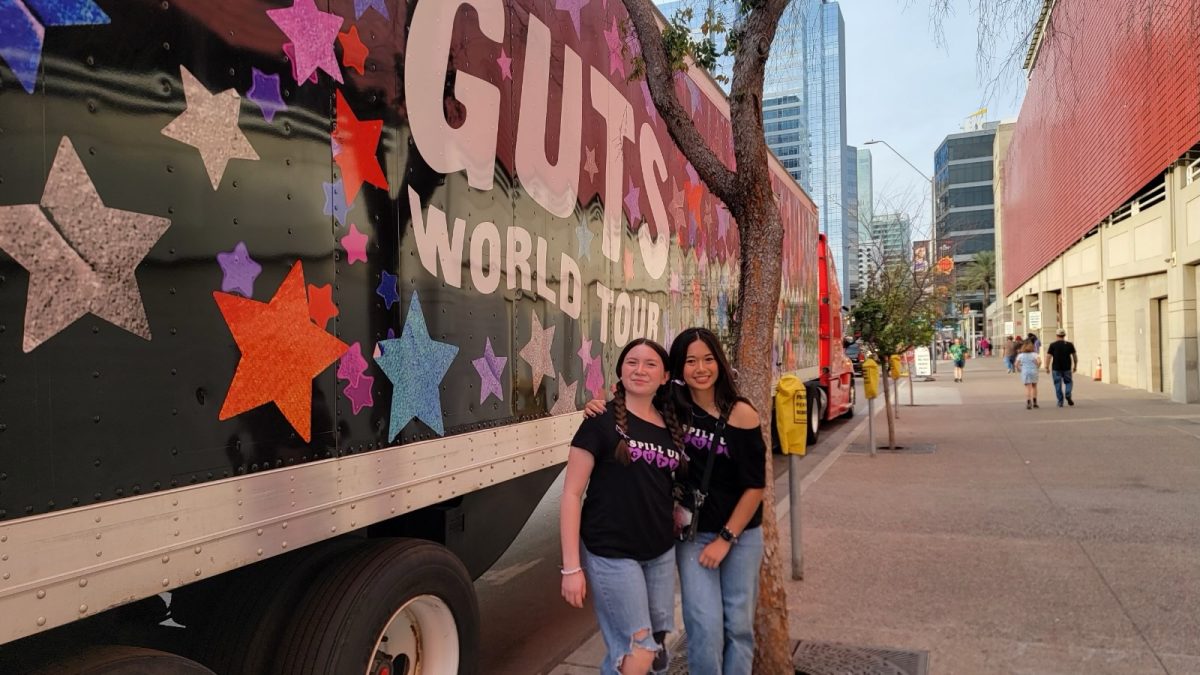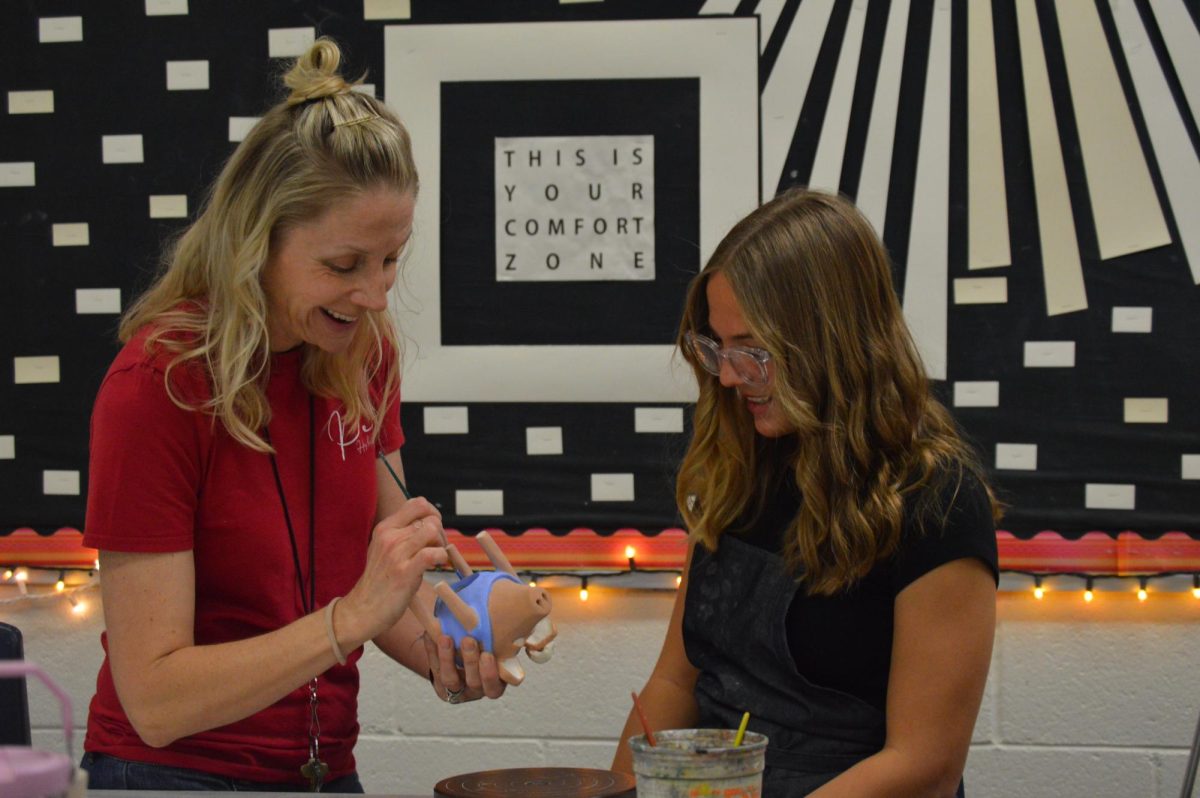Film photography is the art of capturing an image by letting light through cameras and printing the image onto a special type of paper also known as polyester. This form of photography has sparked an interest in junior Sarina Frink and has become her pursued hobby for about three years now. Beginning in the 1880s, film photography has been used for decades and was one of the earliest forms of photography. Film remained as one of the most used forms of photography until the 21st century when advances in digital photography drew more people towards using digital formats. To Frink, film photography is a glimpse into the past.
The reason why Frink became interested in film is due to her prior film teacher Megan DrivingHawk, who encouraged her to join the class her freshman year to learn more about the art of film photography over digital photography. Frink believes that film photography is, “Making something on your own, and not having a computer do it for you.” She explained that film is something original and classic to the person creating the image and how they want the image to appear.
To her, film photography is an outlet for self-expression and it sparks a creative way of thinking. Frink specializes in images that revolve around nostalgia. She stated, “I create images that have a special meaning that takes you back in your memory, the artist’s memory, and the viewer’s memory.” Frink uses film photography to express the past and wants her viewers to, “Look at the image and go, oh, I remember my grandpa would show me pictures like that.” She explained how composing your photos tests your ability rather than a computer’s digital ability to edit images.
Compared to digital photography, film is a much more intensive process involving mixing chemicals and exposing the film to light in a dark room. Film photography results in a more crisp and highlighted image that is 100% raw and unedited, also referred to as a completely “real” image. The purpose of the dark room is to allow the area where film is developed to be completely dark so that no excess light affects the light sensitive photos.
Frink enjoys collecting film cameras to use. She finds her cameras mainly at places such as Goodwill or some antique stores. Frink stated, “I just always check the electronic section, and they’ll have something there.” If you have an interest in pursuing film photography, Frink believes that finding a basic camera and a roll of film can get you started.
While experimenting with the camera and the film may be a bit pricey, Frink believes that “If you look in the right places, it’s a good investment.” She encourages others to join the elective class and explains how film photography is a hands-on activity and is a way of learning how people used to create photographic masterpieces in the past.





